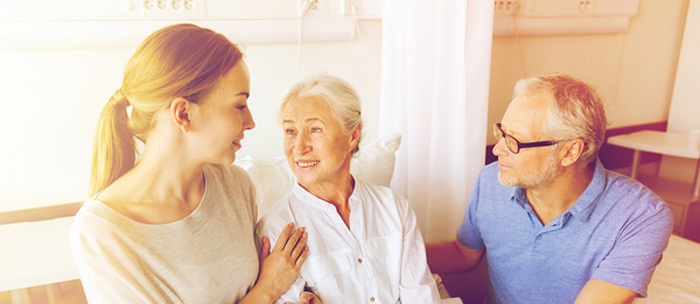
Death and dying are difficult subjects. But they’re also very much a reality -- particularly for older people, those managing terminal diagnoses, and caregivers. And while the phrase “good death” may sound like an oxymoron, the truth is that dying well usually comprises several key elements, according to experts.
In a blog for Greater Good, Dr. Charles Garfield Clinical Professor of Psychology in the Department of Psychiatry at the University of California School of Medicine at San Francisco (UCSF), shares seven components of dying well, which caregivers can use to help the people in their care during this time of transition. Here’s a closer look.
1. Pain management
Physical pain is just one part of the big picture. People who are facing death also experience emotional and spiritual pain. Acknowledging these different pain points and attending to them can offer significant relief.
Says Garfield, “Sometimes, easing spiritual pain can be accomplished by the presence of a person of faith or readings from sacred texts. Other times, it’s better to have someone who can engage in spiritual questioning. Either way, spiritual issues are common at the end of life, and they need attention.” (A dying person's faith can also shape their attitudes about dying, making cultural sensitivity training a useful attribute for caregivers. )
2. Conflict resolution
No person sails through life free of conflicts in their interpersonal relationships. And even after long periods of estrangement, helping family members and friends find resolution with these conflicts can be an invaluable part of experiencing peace. In his book, The Four Things That Matter Most, palliative care doctor Ira Byock reveals four core messages dying people should communicate: I love you; Thank you; I forgive you; Please forgive me.
3. Wish fulfillment
Last wishes are common among the dying, and while not all are possible, many are. Helping people to satisfy their dying wishes, whenever possible, can not only help them feel more at peace with dying but can also bring joy to their last days.
However, Garfield cautions,
“Be careful that these are the wishes of the patient and not just the patient’s significant others. There’s a difference between a good death and an appropriated death—one that’s stolen from the dying person by other forces, including the agenda of close family members.”
4. Finding meaning
In some cases, finding life’s meaning can be easy. For example, if the dying person contributed to the greater good in an obvious way. In other cases, caregivers can facilitate the process of helping the dying find meaning in their lives by encouraging them to think of the people they’ve loved and who have loved them throughout their lifetimes.
5. Shared understanding
Dying can be very lonely -- especially if you’re surrounded by people who don’t understand and acknowledge your wants and needs. Asking dying people what they want can go a long way to helping them feel less isolated and more understood.
6. Protection from unnecessary procedures
Says Garfield, “Emergency rooms, ICU’s, and 911 are set up to preserve life and are not typically supportive of the conditions for a good death. If a person is suffering tremendously, there may be cause to get emergency help; but for most situations, when you throw a person into the larger healthcare system, the prevention of death becomes the imperative, and that can serve to increase suffering for the dying person.”
The takeaway? Arranging for an advanced directive is a must-do if the goal is to avoid unwanted and unnecessary procedures; however, caregivers can be important advocates for loved ones in the matter of life-sustaining treatments versus palliative or hospice care.

7. A desired environment and level of consciousness
Some people want to quietly slip into sleep and die alone; others want to be fully aware and surrounded by their loved ones. While this may be a tricky conversation, it’s also an important one for caregivers aiming to make these wishes a reality.
Ultimately, concludes Garfield, “A good death is no oxymoron. It’s within everyone’s realm of possibility. We need only realize its potential and prepare ourselves to meet it mindfully, with compassion and courage.” By acknowledging these seven components, caregivers can play a vital role in supporting this outcome.
mmLearn.org offers a large library of free videos for caregivers of older adults, covering topics pertaining to senior care. Whether you are a healthcare professional or a family caregiver, if you are caring for an older adult we know that you will find mmlearn.org an essential learning and guidance tool for all of your caregiver training needs. For more free caregiver training, access our database of free online caregiver videos.
